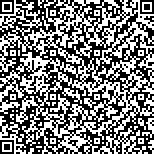| 引用本文: |
彭昕, 孙静, 李悦, 王泽鹏, 刘方铭.微创针刀“通阳柔筋”改善KOA中重度患者膝关节功能及调控膝周肌电信号的研究[J].湖南中医药大学学报,2024,44(9):1639-1645[点击复制] |
|
| |
|
|
| 本文已被:浏览 230次 下载 129次 |
| 微创针刀“通阳柔筋”改善KOA中重度患者膝关节功能及调控膝周肌电信号的研究 |
| 彭昕,孙静,李悦,王泽鹏,刘方铭 |
| (北大医疗淄博医院颈肩腰腿痛诊疗中心, 山东 淄博 255051;北大医疗淄博医院科教科, 山东 淄博 255051;山东第一医科大学第一附属医院(山东省千佛山医院)疼痛科, 山东 济南 250014) |
| 摘要: |
| 目的 研究微创针刀“通阳柔筋”对改善膝骨关节炎(knee osteoarthritis, KOA)中重度患者膝关节功能的影响及对膝周肌电信号的调控作用。方法 选取山东第一医科大学第一附属医院疼痛科2020年1月至2023年1月收治的140例KOA中重度患者,采用随机数字表法分为对照组和观察组,每组70例。对照组采用膝部注射药物治疗,观察组加用微创针刀“通阳柔筋”法治疗。比较两组临床疗效、膝关节功能[西安大略和麦克马斯特大学骨关节炎指数(the Western Ontario and Mcmaster University osteoarthritis index, WOMAC)评分]、膝周肌电信号、血清葡萄糖-6-磷酸异构酶(glucose-6-phosphate isomerase, GPI)、硫酸软骨素846(chondroitin sulfate 846, CS846)、血小板反应蛋白-1(thrombospondin-1, TSP-1)水平、关节炎生活质量测量量表2-短卷(short-form arthritis impact measurement scales 2, AIMS2-SF)评分、膝关节肿胀程度、膝关节屈伸活动度。结果 观察组总有效率(95.71%)高于对照组(84.29%)(P<0.05)。治疗后,两组WOMAC评分均较治疗前下降(P<0.01),且观察组低于对照组(P<0.01)。治疗后,两组股外斜肌、股内斜肌的肌电信号均较治疗前升高(P<0.01),且观察组高于对照组(P<0.01);两组半腱肌的肌电信号均较治疗前降低(P<0.01),且观察组低于对照组(P<0.01)。治疗后,两组血清GPI、CS846、TSP-1水平均较治疗前下降(P<0.01),且观察组均低于对照组(P<0.01)。治疗后,两组AIMS2-SF评分均较治疗前升高(P<0.05,P<0.01),且观察组高于对照组(P<0.01)。治疗后,两组膝关节肿胀程度均较治疗前降低(P<0.01),且观察组低于对照组(P<0.01);两组膝关节屈伸活动度均较治疗前升高(P<0.01),且观察组高于对照组(P<0.01)。结论 微创针刀“通阳柔筋”治疗中重度KOA能提高疗效,改善膝周肌电信号,并可以降低血清GPI、CS846、TSP-1水平。 |
| 关键词: 膝骨关节炎 微创针刀 通阳柔筋 膝关节功能 膝周肌电信号 硫酸软骨素846 血小板反应蛋白-1 生活质量 |
| DOI:10.3969/j.issn.1674-070X.2024.09.013 |
| 投稿时间:2024-04-04 |
| 基金项目:齐鲁医派中医学术流派传承项目“针刀微创中医药特色技术”(2017kj010121)。 |
|
| Improving knee joint function and regulating peri-knee electromyographic signals in moderate to severe KOA patients through minimally invasive acupotomy "unblocking yang to soften sinews" therapy |
| PENG Xin, SUN Jing, LI Yue, WANG Zepeng, LIU Fangming |
| (Pain Management Center for Neck, Shoulder, Lumbar, and Leg, PKU Care Zibo Hospital, Zibo, Shandong 255051, China;Department of Science and Education, PKU Care Zibo Hospital, Zibo, Shandong 255051, China;Pain Management Department, the First Hospital of Shandong First Medical University (Shandong Provincial Qianfoshan Hospital), Ji'nan, Shandong 250014, China) |
| Abstract: |
| Objective To investigate the effects of minimally invasive acupotomy "unblocking yang to soften sinews" therapy on improving knee joint function and regulating peri-knee electromyographic signals in patients with moderate to severe knee osteoarthritis (KOA). Methods A total of 140 patients with moderate to severe KOA admitted to the Pain Management Department of the First Hospital of Shandong First Medical University from January 2020 to January 2023 were selected and randomly divided into control group and observation group using a random number table, with 70 patients in each group. The control group was treated with knee injection, while the observation group received additional minimally invasive acupotomy "unblocking yang to soften sinews" method. The clinical efficacy, knee joint function [the Western Ontario and Mcmaster University osteoarthritis index (WOMAC) score], peri-knee electromyographic signals, serum levels of glucose-6-phosphate isomerase (GPI), chondroitin sulfate 846 (CS846), and thrombospondin-1 (TSP-1), short-form arthritis impact measurement scales 2 (AIMS2-SF) score, degree of knee joint swelling, and range of motion for knee flexion and extension of the two groups were compared. Results The total effective rate of the observation group (95.71%) was higher than that of the control group (84.29%) (P<0.05). After treatment, the WOMAC scores in both groups decreased compared to before treatment (P<0.01), and the observation group had lower scores than the control group (P<0.01). After treatment, the electromyographic signals of the vastus lateralis muscle and vastus medialis oblique in both groups increased compared to before treatment (P<0.01), and the observation group showed higher signals than the control group (P<0.01). The electromyographic signals of semitendinosus muscle decreased in both groups compared to before treatment (P<0.01), and the observation group shower lower signals than the control group (P<0.01). After treatment, the serum levels of GPI, CS846, and TSP-1 in both groups decreased compared to before treatment (P<0.01), and the observation group had lower levels than the control group (P<0.01). After treatment, the AIMS2-SF scores increased in both groups compared to before treatment (P<0.05, P<0.01), and the observation group had higher scores than the control group (P<0.01). After treatment, the degree of knee swelling in both groups decreased compared to before treatment (P<0.01), and the observation group had less swelling than the control group (P<0.01); the range of motion for knee flexion and extension in both groups increased compared to before treatment (P<0.01), and the observation group had a greater range of motion than the control group (P<0.01). Conclusion Minimally invasive acupotomy "unblocking yang to soften sinews" therapy can improve the therapeutic efficacy of moderate to severe KOA, improve peri-knee electromyographic signals, and reduce the serum levels of GPI, CS846, and TSP-1. |
| Key words: knee osteoarthritis minimally invasive acupotomy unblocking yang to soften sinews knee joint function peri-knee electromyographic signals chondroitin sulfate 846 thrombospondin-1 life quality |
|

二维码(扫一下试试看!) |
|
|
|
|




